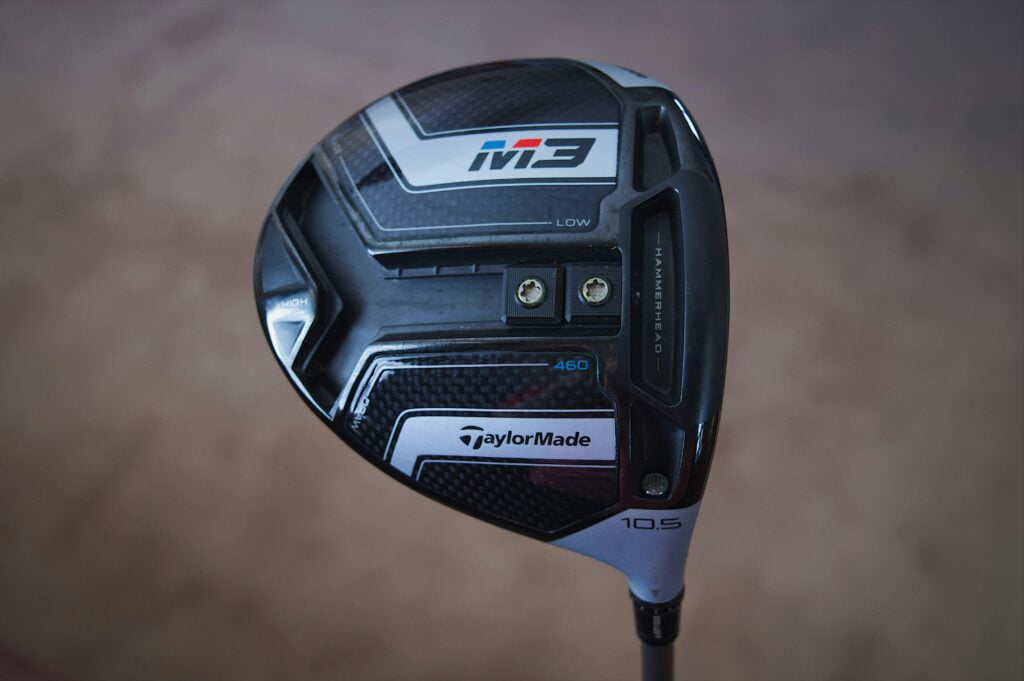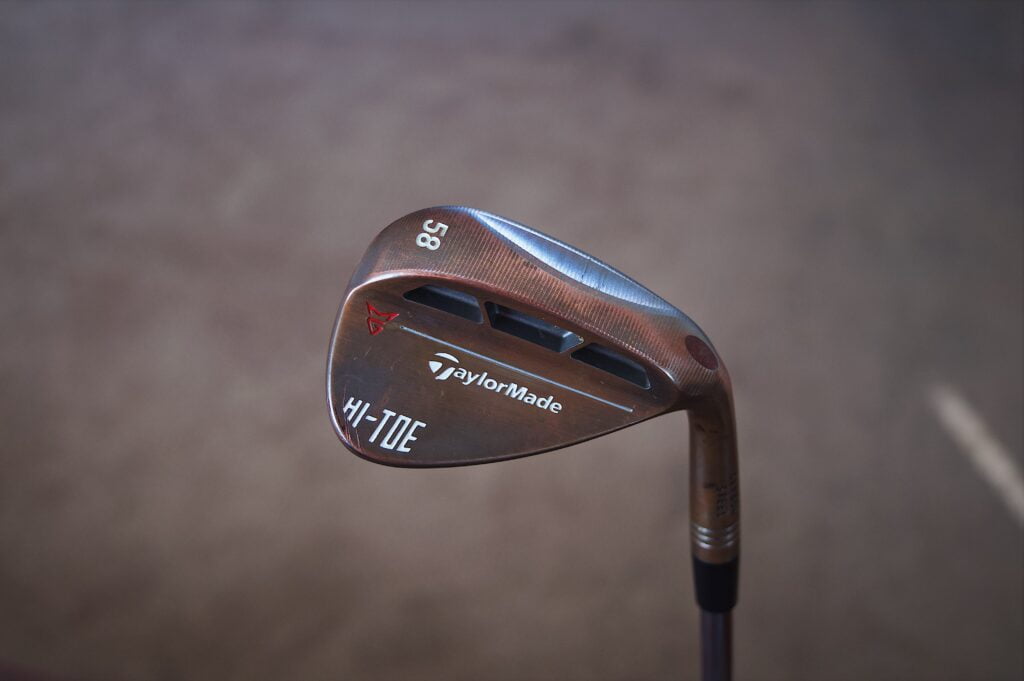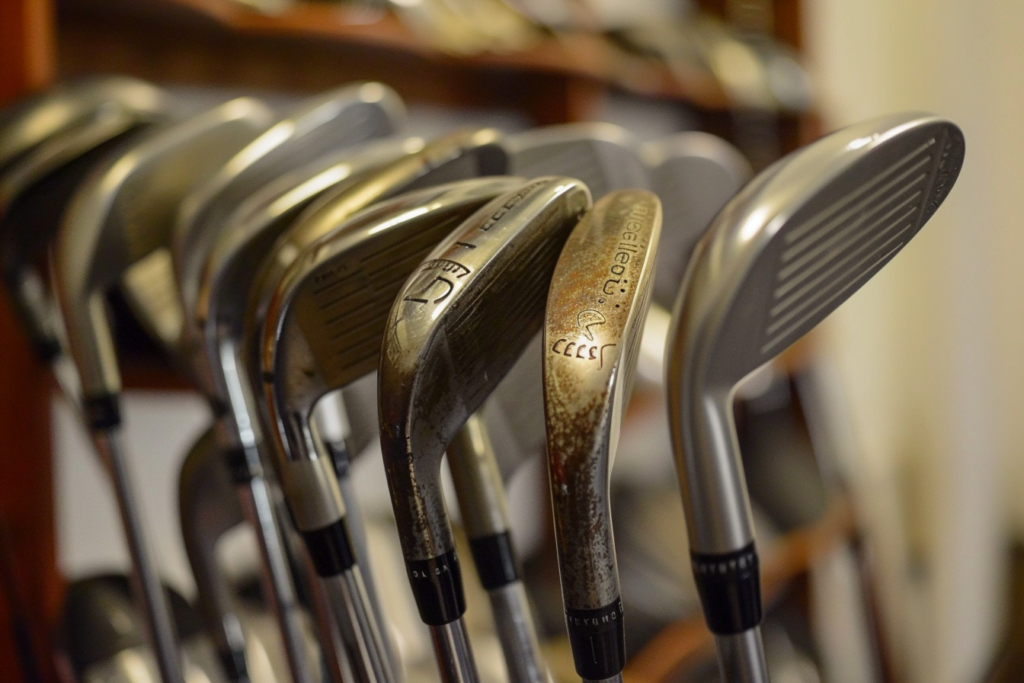
Golf club distances play a crucial role in the game, as golfers need to understand how far each club can hit the ball to make informed decisions on the course. The average distance a golfer can achieve with each club varies depending on factors such as skill level, age, gender, and swing speed. While professional golfers on the PGA and LPGA Tours can hit the ball impressive distances, amateurs and casual golfers often have different yardage expectations for their clubs.
Understanding the average golf club distances helps golfers choose the right club for each shot and plan their strategy on the course. It’s essential to remember that these averages are not set in stone, as individual factors, environmental conditions, and equipment can all influence the actual distance achieved with each club. To improve their distance control, golfers can invest time in training and practice, as well as making any necessary adjustments to their golf clubs or technique.
Table of Contents
Understanding Golf Club Distances

Distance Charts Explained
A golf club distance chart is a valuable tool for golfers to understand the approximate distances they can expect from each club in their bag. These charts usually display distances for various types of clubs, including woods, irons, and wedges. The data in distance charts often contains different sections for different swing speeds, making it easier for golfers to locate their specific speed and associated distances.
Typical golf club distance charts provide both average and maximum distances for each club, helping golfers plan their shots and improve their course management. While these charts serve as great starting points, it’s important to remember that individual results may vary, and regular practice is key to understanding personal golf club distances.
Factors Affecting Distances
There are several factors that can affect the distances a golfer achieves with each club. Some of the main factors include:
- Swing speed: A golfer’s swing speed has a direct impact on the distance they can achieve with their clubs. Generally, faster swing speeds result in greater distances.
- Club loft: The loft of a golf club, or the angle of the clubface, plays a crucial role in determining the distance and trajectory of a shot. Higher lofts typically produce higher and shorter shots, while lower lofts lead to longer, lower shots.
- Skill level: A golfer’s skill level and experience greatly influence their golf club distances. Professional golfers tend to have better swing mechanics and control, leading to more consistent and longer shots compared to amateurs.
- Clubhead design: Technological advancements have led to a wide variety of clubhead designs, each aimed at optimising distance, launch angle, and spin rate. The choice of clubhead design can significantly impact a golfer’s distances.
- Weather conditions: Factors such as wind, temperature, and altitude also affect golf club distances. In tailwind conditions, golfers can achieve longer distances, while headwind makes it difficult to achieve optimal distances.
The Role of Swing Speed
Measuring Swing Speed
Swing speed is a critical factor in determining the distance a golfer can achieve when striking the ball. It refers to the speed of the golf club head as it travels through the impact zone. There are various devices available to measure swing speed, such as launch monitors and swing speed radar devices. These tools help golfers understand their current swing speed, allowing them to make adjustments and improvements to their technique.
Golfers can determine their average swing speed based on age, gender, and skill level. For example, according to a Titleist Performance Institute study in 2019, the average male golfer’s swing speed ranges from 129 kmph for a beginner to 177 kmph for a professional, while female golfers’ swing speeds range from 97 kmph to 145 kmph.
Swing Speed vs. Distance
The relationship between swing speed and distance is not linear, as several factors contribute to the ball’s flight and ultimate distance. One such factor is club speed, which is the velocity of the club head at the moment of impact. This includes the ball speed or the speed at which the ball leaves the clubface. The efficiency of the energy transfer from club to ball, known as the “smash factor,” also influences distance.
A higher swing speed typically results in greater ball speed and distance. However, it is essential to strike a balance between speed and control to maintain accuracy. The following table provides a general guideline for distances achieved by various club types at different swing speeds:
| Swing Speed (kmph/mph) | Driver (m/yds) | 5-Iron (m/yds) | 9-Iron (m/yds) |
|---|---|---|---|
| 97 / 60 | 128m / 140yds | 91m / 100yds | 55m / 60yds |
| 113 / 70 | 160m / 175yds | 114m / 125yds | 69m / 75yds |
| 129 / 80 | 192m / 210yds | 137m / 150yds | 83m / 90yds |
| 145 / 90 | 224m / 245yds | 160m / 175yds | 96m / 105yds |
| 161 / 100 | 256m / 280yds | 183m / 200yds | 110m / 120yds |
While swing speed and distance are interconnected, it is essential to remember that technique, club selection, and course conditions all play a role in overall performance. By understanding the factors affecting distance and incorporating this knowledge into practice and game strategy, golfers can optimise their performance on the course.
Driver and Wood Distances

Driver Distance Fundamentals
The driver is the club that typically generates the greatest distance in a golfer’s bag, and therefore is a crucial component for success on the golf course. One important concept for maximising driver distance is the Smash Factor, which is determined by dividing the ball speed by the swing speed. The ultimate goal for excellent ball striking with the driver is a Smash Factor of 1.5 [^1^]. This means that the higher the swing speed and the more efficient the ball’s contact, the greater the distance potential. The type of golf ball used can also affect the ball speed and overall distance.
Distances for 3-Wood and 5-Wood
The 3-wood and 5-wood are also essential clubs for golfers to achieve long distances. Generally, a 3-wood provides a distance between the driver and the longest iron in a golfer’s set of clubs. The 5-wood, on the other hand, offers a slightly shorter distance than the 3-wood. The distances of these particular clubs can vary significantly among golfers.
It’s important for golfers to be aware of their average distances for each club, as it can help them better strategise and execute shots on the golf course. To compare their performance with other golfers, they can refer to a distance chart that outlines club distances for amateur and professional players.
Iron Play Distances

When it comes to golf club distances, irons play a significant role in bridging the gap between the driver and the wedges. Irons typically range from a 4-iron down to a 9-iron, allowing golfers to achieve various distances and shot shapes.
Long Irons Distance
Long irons include the 4-iron, 5-iron, and 6-iron. These clubs are designed for greater distances and are often used for tee shots on tighter holes or approach shots on long par-4 and par-5 holes. The average distances for long irons are as follows:
- 4-iron: 174-192 metres for men, 137-155 metres for women
- 5-iron: 165-183 metres for men, 128-146 metres for women
- 6-iron: 155-174 metres for men, 119-137 metres for women
Mid Irons Distance
Mid irons include the 7-iron and 8-iron, which are commonly used for approach shots on medium-length par-4 holes and shorter par-5s. These clubs provide a good balance between distance and accuracy, making them essential tools for most golfers. The average distances for mid irons are:
- 7-iron: 146-160 metres for men, 110-123 metres for women
- 8-iron: 133-146 metres for men, 101-114 metres for women
Short Irons Distance
Short irons consist of the 9-iron and the various wedge options. These clubs are designed for precision and control, allowing golfers to get closer to the pin on short approach shots or hit high-lofted shots over obstacles. The average distances for short irons are:
- 9-iron: 114-128 metres for men, 83-96 metres for women
Specialty Clubs and Wedges

Hybrid Clubs
Hybrid clubs have become an increasingly popular addition to golfers’ bags in recent years. They combine the features of long irons and fairway woods, providing players with the ability to hit more accurate shots and achieve better distances. Hybrid clubs typically replace the 3, 4, or 5 irons, making them a versatile option for various situations on the golf course. Players often find hybrids easier to hit than their iron counterparts, which can lead to improved results and increased confidence on the course.
Wedge Distances
Wedges are critical components of a golfer’s arsenal, providing control and precision to approach shots and helping players navigate difficult situations around the green. There are several types of wedges, each with its own unique characteristics and purposes.
- Pitching Wedge (PW): Typically used for full swing shots and longer approach shots, pitching wedges have a loft angle between 44 and 48 degrees. Average pitching wedge distances are around 87-105 metres for men and 69-82 metres for women.
- Gap Wedge (GW): Bridging the gap between the pitching and sand wedges, gap wedges have a loft angle of 50 to 54 degrees. This club is ideal for shots that require finesse and control, with average distances ranging between 82-101 metres for men and 55-67 metres for women.
- Sand Wedge (SW): As the name suggests, sand wedges are designed for bunker shots and have a loft angle of 54 to 58 degrees. They can also be used for short chip shots around the green, with average distances of 73-91 metres for men and 46-55 metres for women.
- Lob Wedge (LW): With a loft angle between 58 and 62 degrees, lob wedges are essential for high, soft shots when faced with obstacles near the green. Average lob wedge distances are 55-64 metres for men and 37-46 metres for women.
Adjusting for Individual Factors

Influence of Gender and Age
Both gender and age can play a crucial role in determining average golf club distances. On average, male golfers tend to hit the ball further than female golfers due to differences in muscle mass and swing speed. However, within each gender, there is still a wide range of distances based on individual abilities and physical conditions. Senior golfers, regardless of gender, may experience a decrease in their club distance due to factors such as reduced swing speed and flexibility.
| Gender | Age Group | Average Driver Distance |
|---|---|---|
| Male | Adults | 210-229 metres |
| Female | Adults | 183-202 metres |
| Senior Male | 60+ | 192-206 metres |
| Senior Female | 60+ | 165-174 metres |
Skill Level Variations
A golfer’s skill level, often represented by their handicap, greatly affects the distance they can achieve with each club. Lower handicap players typically have a more refined swing, resulting in more consistent, longer shots. In contrast, higher handicap players may struggle with accuracy and distance due to improper swing mechanics or less developed skills.
Here’s a brief overview of how skill levels may impact average club distances:
- Low Handicap Players:
- More consistent ball striking
- Greater swing speed
- Better control over shot trajectory
- High Handicap Players:
- Inconsistent ball striking
- Lower swing speed
- Limited control over shot trajectory
To improve your club distances, focus on swing speed and technique, as these are key factors in generating more powerful and accurate shots.
Environmental and Equipment Considerations

Impact of Weather and Altitude
Weather conditions play a significant role in determining the distance a golf ball travels. Factors such as wind, temperature, and humidity can alter the ball’s trajectory and overall distance. For instance, a strong tailwind can increase the distance the ball covers, while a headwind may reduce it. Additionally, the temperature can influence the density of the air and the elasticity of the golf ball. Cold weather typically results in shorter distances, as the ball’s compression is reduced and air resistance increases.
Altitude also has a noticeable impact on golf club distances. At higher altitudes, the air is thinner, which means there is less air resistance, allowing the golf ball to travel further. In comparison to sea level, distances at higher altitudes can increase by approximately 10%.
Choosing the Right Equipment
Selecting the appropriate equipment for your game is essential to maximize your average golf club distances and improve your overall performance. This includes choosing the right clubs, golf balls, and ensuring a proper club fitting.
Golf Clubs: Golfers should select clubs tailored to their skill level, swing speed, and personal preferences. Clubhead designs and shaft flex can have a significant effect on the distance achieved. For example, a more flexible shaft is suitable for slower swing speeds, as it helps increase launch angles and generate more power, resulting in greater distances.
Golf Balls: The choice of golf ball can also play a role in the distance achieved. Ball construction, such as the number of layers, core material, and cover composition, affects the ball’s trajectory, spin rate, and feel. Golfers should choose a ball that best complements their playing style and ability level to maximize distance potential.
Club Fitting: A customized club fitting is crucial for optimizing your golf club distances. Factors such as club length, lie angle, and grip size, impact launch angles and swing plane. By undergoing a proper club fitting, golfers can ensure that their equipment is suited to their specific swing characteristics, resulting in better accuracy and improved distances.
Improving Distance Through Training

Physical Fitness and Strength Training
Improving your distance in golf requires a strong foundation in physical fitness. Strength and conditioning play a crucial role in generating power and increasing swing speed. A comprehensive strength training program will target the key muscle groups involved in the golf swing such as the core, lower back, hips, and shoulders.
Here’s a sample strength training routine for golfers:
- Core exercises: Planks, Russian twists, and leg raises
- Lower back exercises: Deadlifts and supermans
- Hip exercises: Squats, lunges, and glute bridges
- Shoulder exercises: Standing military press and lateral raises
Aside from strength training, it is also essential to maintain flexibility and mobility, as these factors also contribute to an efficient golf swing. Incorporate stretching exercises and yoga into your fitness routine, focusing on areas such as hamstrings, hip flexors, and shoulders.
Technique and Swing Mechanics
Golfers should also focus on improving their technique and swing mechanics to achieve greater distances. Crucial aspects of swing mechanics include:
- Grip: A proper grip allows for optimal clubface control and a more efficient transfer of energy to the ball.
- Stance and posture: Ensuring correct alignment, balance, and spine angle promotes solid contact with the ball and optimal trajectory.
- Backswing and downswing: Developing a smooth, yet powerful backswing and downswing sequence helps maximize clubhead speed at impact.
To improve technique and swing mechanics, consider working with a qualified golf coach who can provide tailored advice and drills. Using video analysis tools or swing speed sensors can also be beneficial in identifying areas for improvement and tracking progress.
Frequently Asked Questions
What are the typical distances for each golf club category for male players?
For male players, the average distances for each golf club category can vary depending on skill level and swing speed. However, some general distance averages are as follows: driver (210-238 metres), 3-wood (200-208 metres), 5-wood (190-198 metres), 4-iron (174-192 metres), 5-iron (165-183 metres), 7-iron (146-160 metres), 8-iron (133-146 metres) and 9-iron (114-128 metres).
How does age affect average golf club distances?
Age can affect golf club distances due to factors like declining physical strength, flexibility, and swing speed. Older golfers might experience a decrease in their average distances, but this varies on an individual basis and other factors, such as golfing experience and skill, can also play a role.
What are the expected golf club distances based on different handicap levels?
Golf club distances vary based on a player’s handicap. Typically, golfers with lower handicaps generate greater distances due to better technique and swing speed. As handicap levels increase, average golf club distances tend to decrease, reflecting a wider range of skill levels among golfers with higher handicaps.
What is the range of distances for women golfers using standard clubs?
Women golfers generally have different average distance ranges than men due to differences in swing speed and physical strength. Some common distance averages for women players are: driver (147-183 metres), 3-wood (138-172 metres), 5-wood (125-156 metres), 4-iron (137-155 metres), 5-iron (128-146 metres), 6-iron (119-137 metres) 7-iron (110-123 metres), 8-iron (101-114 metres) and 9-iron (83-96 metres).
How can you use a golf club distance chart to improve your game?
A golf club distance chart can help players understand their own strengths, weaknesses, and yardage gaps between clubs. By knowing the average distances for each club, golfers can make more informed decisions on club selection and shot strategy, which can lead to better overall performance and lower scores on the golf course.
Are there any variations in golf club distances when measuring in meters instead of yards?
Golf club distances are often measured in yards, but when using meters, the numbers remain relatively constant when considering the conversion factor (1 yard equals 0.9144 meters). To convert yardages to meters, golfers can simply multiply their estimated distances by 0.9144. While the distances themselves remain consistent, it’s essential to use appropriate units of measurement to accurately estimate and compare distances on the golf course.

